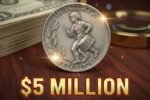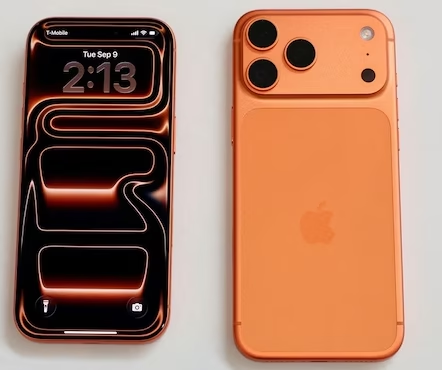Sacagawea Dollar : We’ve all dreamed of finding a hidden treasure, often imagining it tucked away in an attic or buried in a field. But what if that treasure once sat on a grocery store shelf, nestled inside a box of Cheerios? This isn’t a fantasy; it’s the true story of one of the most fascinating modern American coins—the 2000 Cheerios Sacagawea dollar.
A Breakfast Aisle Introduction to a New Coin
To understand why this coin is special, we have to go back to the year 2000. The U.S. Mint was preparing to launch a new golden dollar coin, hoping it would succeed where the unpopular Susan B. Anthony dollar had not. To generate public excitement, they partnered with General Mills for a massive promotional campaign. Ten million new Sacagawea dollars were placed inside boxes of Cheerios, offering a free, shiny dollar to millions of families.
For most, it was a fun surprise with their morning cereal. They might have saved the coin for a week or two before eventually spending it on a candy bar or a soda. Unbeknownst to them, a tiny fraction of those cereal boxes contained a coin that was fundamentally different from all the others.
The Telltale Feathers: A Secret in Plain Sight
So, what separates a common Sacagawea dollar from the legendary “Cheerios” variety? The answer lies on the back of the coin, in the intricate details of the eagle in flight.
When a coin design is finalized, early prototypes are struck to test the design. These prototypes often have sharper, more detailed features than the coins mass-produced for the public. The Mint used these early, prototype dies to strike the first batch of coins for the Cheerios promotion. On these special coins, the eagle’s tail feathers are exquisitely detailed, with individual, separated lines. On the standard dollars released later, these feathers are smoother and less defined, a simplification for high-volume production.
This small, almost invisible difference is what creates a colossal gap in value. It’s a story of precision versus practicality, captured in metal.
Why a Cereal Box Coin Can Be Worth a Small Fortune
The value of the Cheerios dollar is driven by a perfect storm of rarity, history, and pure charm.
- Extreme Rarity: Of the 10 million coins distributed in cereal boxes, experts believe only about 5,500 contained this specific “detailed tail feathers” variety. The rest were standard coins. This tiny number makes it a key prize for collectors.
- A Numismatic “What If”: This coin is considered a “pattern coin,” representing the original artistic vision before it was altered for mass production. It’s a piece of monetary history that almost was.
- The “Everyday Treasure” Factor: The coin’s origin story resonates deeply. It wasn’t sold in a expensive collector’s set; it was found by everyday people going about their grocery shopping. This narrative of potential discovery in the most ordinary places fuels collector passion.
Because of this, a Cheerios dollar in excellent condition can sell for thousands of dollars at auction. Even a well-worn coin, if the feather details are clear, can be worth a significant amount.
Could You Still Find One in Your Change?
While most were identified and pulled from circulation years ago, the hunt is not over. Stories still emerge of someone finding one in a handful of change from a convenience store, in an old coin jar from a relative, or in a roll of dollar coins obtained from a bank.
The reason is simple: not everyone in 2000 was a coin collector. Many people, especially children, received the coin and eventually spent it without a second thought. These coins have been quietly circulating for over two decades, waiting for a knowledgeable eye to spot them.
Your Guide to the Hunt
If you’re inspired to check your own change, here’s what to do:
- Find a 2000-P Sacagawea Dollar: First, you need a dollar coin from the year 2000, minted in Philadelphia (indicated by a “P” mint mark near the date).
- Examine the Eagle’s Tail: Turn the coin over and look closely at the tail feathers of the flying eagle. Use a magnifying glass or the zoom on your phone camera for a better view.
- Compare the Details: Look for the sharply defined, separated lines in the feathers. If the feathers look smooth, blended, or lack fine detail, you have a common coin. If the lines are clear and distinct, you may have found a treasure.
If you think you’ve found one, handle it carefully by the edges and consider having it authenticated by a professional grading service. You’re not just holding a dollar; you’re holding a piece of numismatic folklore—a reminder that wonder can be found in the most unexpected places, even at the bottom of a cereal box.





